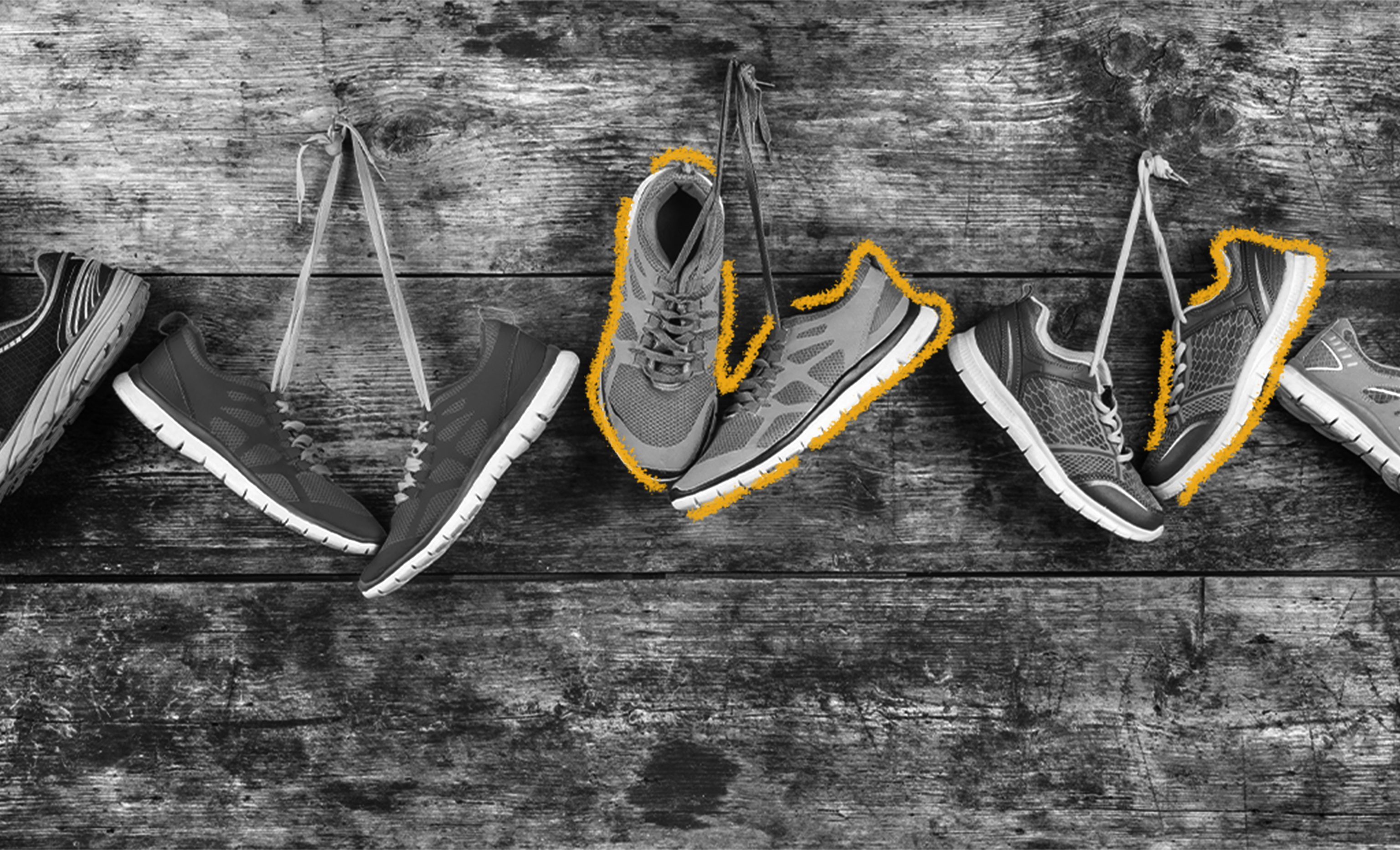One of the earliest known pairs of running shoes dates back to 1865. They’re thought to have belonged to a man known as Lord Spencer and closely resemble a men’s dress shoe but with spikes on the bottom and a lateral band for support. Other early running shoes were made by J. W. Foster and Sons (which later became Reebok); the company even supplied shoes to the 1924 Olympic 100-meter champion, Harold Abrahams. After World War I, running shoes with rubber soles became popular with athletes when companies like Keds and Converse started selling them as sports shoes. In the late 1940s, rival brothers Adi and Rudolf Dassler launched Adidas and Puma, respectively. Yet up through the 1950s, most runners were still wearing leather spike shoes. Head track coach for the University of Oregon Bill Bowerman wanted to create a lighter, faster shoe for his athletes. After being rejected by several manufacturers, he and one of his former student athletes, Phil Knight, started Blue Ribbon Sports. The company sold shoes at races that were based on Bowerman’s designs and made by Japanese running companies. One of their models, the Cortez, offered a sponge rubber midsole, making it one of the first shoes to offer cushioning against the impact of the road. In May 1971, the two men formed their own manufacturing company: Nike. In the 1970s, sports science was applied to running shoes. Podiatrists identified different running gaits and consulted on shoe research and design. Groundbreaking EVA (ethylene vinyl acetate) was first used in Brooks’ Villanova shoes in 1975, and many running shoes still use EVA today. Nike’s Bowerman also developed the waffle sole during this decade. Perhaps most notably, the company also debuted the first female-specific running shoes in 1978. Stability shoes were developed in the 1980s. Minimalist running shoes designed to mimic being barefoot debuted in the mid-2000s, including Vibram’s FiveFingers in 2006. Since then, running shoes have continued to be made lighter, more comfortable, and more personalized as companies strive to provide shoes that prevent injury and boost performance.

Your go-to guide for weird history facts
Subscribe to the FREE daily email that makes learning about history fun.


